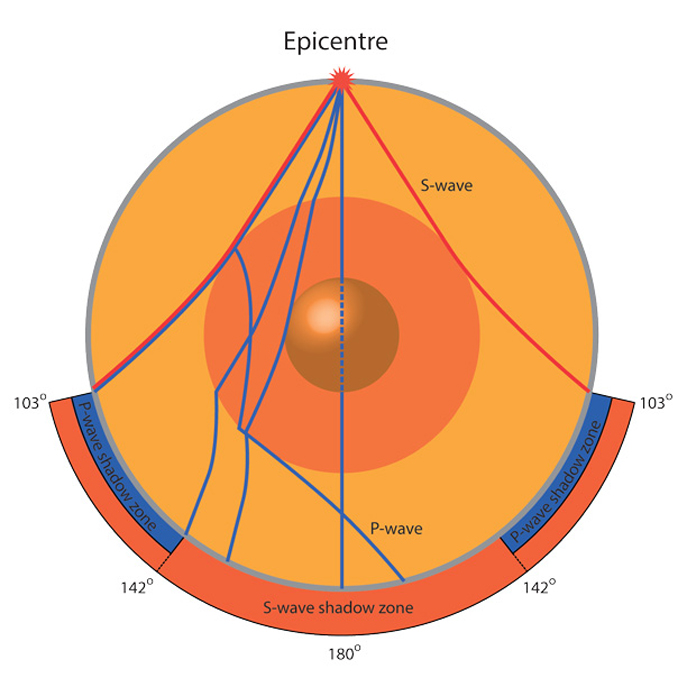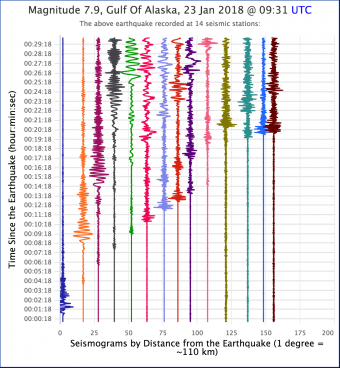

They travel more slowly than seismic body waves P and S. They are called surface waves, as they diminish as they receive further from the surface. They can be classified as a form of mechanical surface waves. Seismic surface waves travel along the Earth's surface. Shear waves can't travel through all liquid medium, so the absence of S-waves in earth's outer core suggests a liquid state. S-waves are slower than P-waves, and speeds are typically around 60% of that of P-waves in any assumption material. S-waves can travel only through solids, as fluids liquids and gases do not assist shear stresses. Depending on the propagational direction, the wave can take on different surface characteristics for example, in the case of horizontally polarized S waves, the ground moves alternately to one side and then the other. an earthquake event, S-wavesat seismograph stations after the faster-moving P-waves and displace the ground perpendicular to the domination of propagation. Secondary waves S-waves are shear waves that are transverse in nature. Primary waves P-waves are compressional waves that are granite. in two types of body waves: Primary and Secondary waves.


Two types of particle motion or situation.

This effect resembles the refraction of light waves. The density and modulus, in turn, redesign according to temperature, composition, and the tangible substance that goes into the makeup of a physical object phase. Other modes of wave propagation live than those covered in this article though of comparatively minor importance for earth-borne waves, they are important in the case of asteroseismology.īody waves travel through the interior of the Earth along paths controlled by the the tangible substance that goes into the makeup of a physical object properties in terms of modulus stiffness. TypesĪmong the many shape of seismic waves, one can make a broad distinction between body waves, which travel through the Earth, and surface waves, which travel at the Earth's surface.: 48–50 : 56–57 In geophysics, the refraction or reflection of seismic waves is used for research into the configuration of Earth's interior, and man-made vibrations are often generated to investigate shallow, subsurface structures. Seismic wave fields are recorded by a seismometer, hydrophone in water, or accelerometer.Įarthquakes make distinct set of waves with different velocities when reaching seismic observatories, their different travel times assist scientists to locate the quotation of the hypocenter. Seismic waves are studied by geophysicists called seismologists. many other natural & anthropogenic sources produce low-amplitude waves commonly subjected to as ambient vibrations. Seismic waves are waves of energy that travel through Earth's layers, as well as are a a thing that is said of earthquakes, volcanic eruptions, magma movement, large landslides and large man-made explosions that provide out low-frequency acoustic energy.


 0 kommentar(er)
0 kommentar(er)
